Laminar flow of air is essential to the functioning of laminar airflow cabinets. A laminar air flow hood is certainly an extremely important piece of laboratory furniture, mostly seen in microbiology or medical labs. Come, let us explore what is laminar air flow, why we use laminar airflow cabinets, and how it works.
Everything About Laminar Flow of Air
To be frank, the words “laminar flow of air” does not indicate any furniture, but a principle in fluid mechanics. When air moves through a given space in both unified direction and velocity, it is said that it has achieved laminar air flow. It comes from the word ‘lamina’ that means that the air moves as one uniform body.
A laminar air flow cabinet, also known as a tissue culture hood, clean bench, biological safety cabinet, or simply laminar hood, is a work surface enclosed in a boxlike structure mechanized to flood the inside of the enclosure with clean, sterilized air flowing in a laminar manner. It looks something akin to a fume hood , but works the opposite way.
| What’s the difference between a fume hood and a laminar airflow cabinet? A fume hood sucks air out of the work area. A laminar airflow cabinet sucks clean air into the work area. |
Why Do We Use Laminar Airflow Cabinets
In biological science labs, we often have to work with sensitive cultures that are very sensitive to contaminants floating in the air. A small volume of air (just the amount we inhale) can have millions of floating particles and microbes in it ‒ you don’t want that in your precious culture. So, in order to keep your work safe from these airborne contaminants, you have to work in a sterile environment. Thus, enclosed work surfaces are needed with filtered air supply.
This airflow has to be laminar in nature, because normally air flows in a very irregular nature. Normal ‒ that is, turbulent air flow creates lots of eddies and vortices that wreak havoc on any sterile-air environment. They can gather and deposit particles from outside air on your microbial culture and screw up your results. Thus, we drown the work area in air that moves as one body, with uniform velocity and direction, so that eddies and vortices don’t form. That is exactly what laminar flow of air is.
| Key takeaway: Laminar Air Flow prevents samples and cultures from getting contaminated by providing a clean-air work environment. |
Laminar Flow of Air in Laminar Airflow Cabinet
The basic idea of a laminar airflow cabinet is to provide a safe, sterile, filtered air environment. To that end, it uses the following parts:
- Enclosure
- Work Surface
- Prefilter/filter pad
- Blower/fan
- HEPA Filter
- UV Lamp
These parts come together to make a laminar airflow cabinet. Using the blower or fan, the device sucks in room air from the front or top of the device. The air first passes through the prefilter or filter pad, which captures large dust particles from the air. Then it goes through the HEPA filter, which filters out all the fine particles and microbes. That filtered air then pours into the enclosure and washes over the work surface, clearing it of any suspended particles and microbes. You can use the UV lamp to further sterilize the work area.
The air flow is kept laminar by way of constructing the device carefully, so that all parts of the air inside the enclosure flows in straight lines parallel to each other, in the same direction. The airflow can be horizontal or vertical in manner, depending upon the purpose of the sterile hood ‒ to keep the sample safe or to keep the user safe.
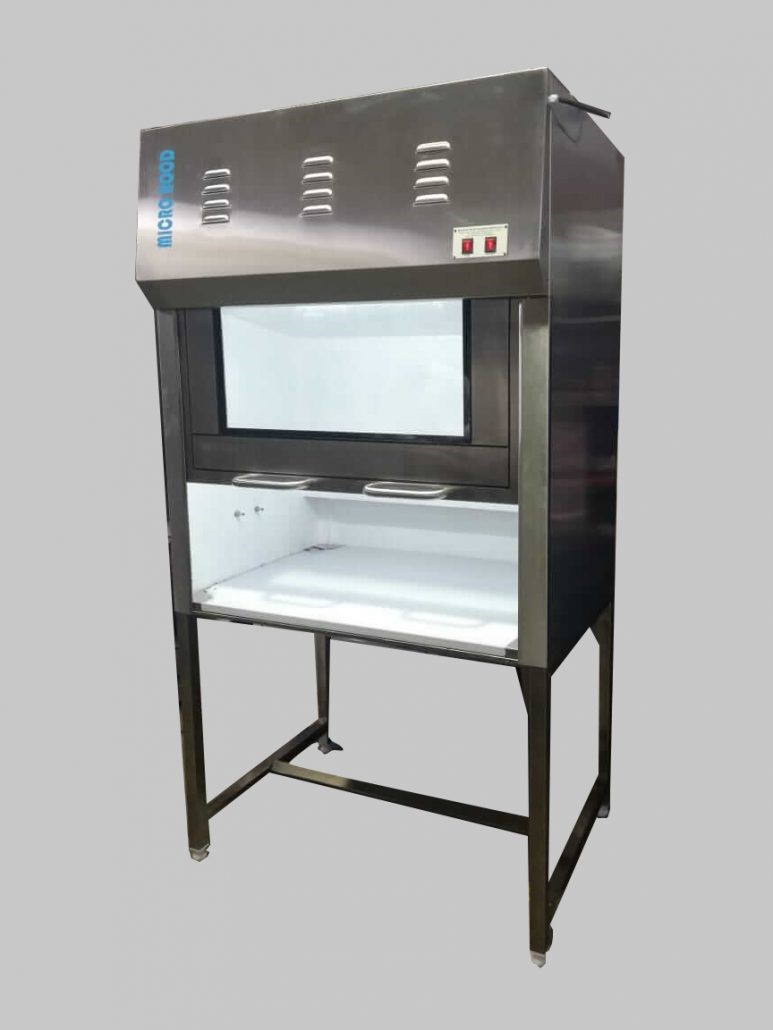
A vertical laminar airflow cabinet provided by Labkafe
Parts of a Laminar Air Flow Cabinet
1. Enclosure
This is an enclosure which provides the voluminous area to act as a sterile environment. It is generally a stainless-steel cuboid box, with a glass shutter in front. The enclosure protects the sterile environment created inside the cabinet by insulating it and separating it from the outside environment.
The material of the box is often stainless steel, because it is very resistant to biological contamination and is easy to clean, without requiring any special coating as such. The glass (or fiberglass) shutter in front of the box opens completely or partially by means of hinges or sliders, thereby letting the user access the work surface.
2. Work Surface
Made of stainless steel, this is the flat table for you to work on inside the enclosure. If it is a vertical laminar airflow cabinet, then the work surface may have holes in it (or be a hard net-like structure) to let the air pass through. You can put your work apparatus on this surface and carry out sensitive tasks like tissue culture, electronic wafer formation, bacterial culture, and more.
The material of the work surface is often stainless steel too, for similar reasons as above. It is resistant to biological contamination, it is easy to disinfect, and it does not require any special coating. It is also sturdy and will support almost any lab equipment you can use in a microbiology lab.
3. Pre-filter
The pre-filter or filter pad is the first line of defense against impure air in a laminar airflow cabinet. It comes in contact with the outside environment directly, generally behind a mesh, net or grill, either on top of the cabinet or below the work surface facing the front.
The pre-filter is basically a large piece of washable sheet, folded a few times over to make it thick. It has large fibrous pores that can trap suspended particles in air about 5 microns or bigger. It acts as the primary filter that scrubs out the air by interception method of filtering.
| The main filter in a laminar airflow cabinet can’t handle large dust particles, it will get dirty too fast. This is why they put a washable and reusable pre-filter first in the path of the airflow. |
4. Fan or Blower
The actual machine responsible for the airflow, the fan or blower sucks the air in through the pre-filter and presses it through the HEPA filter. It sits in between these filter pads and controls the airflow. It can come in different shapes and sizes depending upon your model, and in different powers as well.
5. HEPA Filter
The most important part of a laminar airflow cabinet is the HEPA (High Efficiency Particulate Air) filter that sits right next to the Enclosure, separated only by a grill or mesh. If the device is the horizontal airflow type, then the HEPA filter will be at the back of the device; and if it is the vertical airflow type then it will be on top of the enclosure. This filter acts as the final filter that cleans the air as much as possible, ridding the air of particles and microbes as small as 0.3 microns in size. It works in the following three mechanisms:
- Interception: Large particles get stuck to the fibers in the HEPA filter.
- Impaction: Medium-sized particles get tossed about in contradictory micro airstreams and get caught by the fibers.
- Diffusion: Impure particles move in Brownian motion and get trapped within the filter fibers.
6. UV Lamp
While the HEPA filter does supply well-filtered air, it isn’t completely sterile. Microbes less than 0.3 microns in size can pass through the filter, and sometimes outside air does get in. Even the surfaces of the enclosure and work area can have microbes stuck to them. To clean them out, we need something more than just air pressure.
The UV lamp comes to our rescue. It radiates ultraviolet light, which is carcinogenic in nature. It causes cells to grow unnaturally and destroys living proteins. Water purifiers use the same idea, actually. The lamp not only sterilizes the air and the surfaces inside the enclosure, but you can also put your glassware and plasticware like beakers, test tubes, petri dishes etc. on the workbench to get them sterilized.
7. Illumination
The manufacturer generally puts a fluorescent or LED tube inside the enclosure on the top surface so that you can see what you are doing in the cabinet.
8. Controls
The controls for the fan, the UV lamp, the light switches and knobs should be outside on a single control pad. Sometimes, the maker may provide a foot switch to control the airflow while working.
| Don’t turn on the blower and the UV lamp at once! The UV lamp needs the air inside the cabinet to stand still if it is to work properly. |
Types of Laminar Airflow Cabinets
There are mainly two kinds of laminar hoods depending upon the direction of the airflow ‒ vertical and horizontal.
Vertical Laminar Airflow Cabinet
In this more common, compact type, the air flow is from top to bottom. The filters and the fan/blower is mounted on top of the device. The air can flow out the front of the enclosure after hitting the work surface, or the work surface can be perforated to let the air pass through and feed back up top into the primary filter.
Since the air does not hit the user directly, this type of cabinet is taken as a safer bet for the user, and you can perform potentially dangerous experiments in a vertical laminar airflow. However, it is not suitable for running while working, since the air hits the apparatus directly through the open top and can contaminate the samples.
Horizontal Laminar Airflow Cabinet
These are rather large and spacious and mount the HEPA filter at the back of the cabinet. The airflow is from back to front directly at the user and can’t operate without the front glass sash open. The pre-filter sits flush with the front wall of the box underneath the work surface and sucks air from the front. The blower is also at the bottom portion.
Since the airflow directly hits the user, the horizontal laminar airflow cabinets are not suitable for potentially dangerous operations. However, where protecting the sample is mandatory and airflow has to be provided while working, these work best since these provide more laminar air layers tangentially to the open sides of the labware.
How to Use a Laminar Airflow Cabinet
- Clean the area around the device so that no heavy dust gets sucked into the filters.
- Clear the work area of any previous apparatus or glassware or debris.
- Keep the lid open (if required for airflow), and turn on the fan.
- Run the airflow for 10-15 minutes.
- Open the lid and clean all the inner surfaces with 70% ethanol.
- Close the lid tightly and turn on the UV lamp. Stay away!
- Keep the UV lamp on for 15 minutes.
- Turn off the UV lamp and turn on the interior light.
- You can start your work now.
- If your work takes a long time, remember to change the air periodically by running the blower once in a while. If your work is potentially dangerous, keep the lid closed before you turn on the fan.
| Make sure you are wearing all protective lab gear (lab coat, long gloves, face mask and safety glasses) before you operate a laminar hood. |
Pros & Cons of a Laminar Airflow Cabinet
Advantages
- Eco-friendly ‒ does not release toxic gas to the outside environment unlike fume hoods
- Easy to maintain ‒ just wash the pre-filter when it gets dirty.
- Comparatively cheap ‒ they are simple machines and don’t dig a hole in your pocket.
- Portable ‒ most laminar airflow cabinets are lightweight and have castor wheels on the bottom, so you can reposition them easily.
- They provide a very clean and sterile atmosphere in which you can work.
- Vertical laminar workflows also protect the user from dangerous contaminants.
Disadvantages
- Working while the flow is turned on creates disruptive air columns with eddies and vortices, which defeats the purpose of the device.
- Horizontal laminar air flow blows fumes and contaminated air directly at the user’s face.
- Without proper handling, these devices fail quickly.
Where Can We Use Laminar Airflow Cabinets
A biochemistry lab is the most common place to find one. All tissue and microbe cultures are sensitive to things floating in the air and so they have to be protected this way. Also, in the pharmaceutical industry, the labs use these devices commonly to work with medicines and cultures to test them on. The pharmacy factories also use larger versions of similar devices working on the same concept.
In the electronics industry, things are getting smaller every day and now they have to work with microscopic items and circuits. Naturally, they are sensitive to dust particles in the air which are generally many times bigger than the component. The effect is like a rock falling on a pencil. To prevent this, most electronics labs use horizontal laminar workflow cabinets (since there is nothing to protect the user from).
| Some libraries and museums also use laminar airflow cabinets to work on very old manuscripts or artifacts. |
Rules of Laminar Airflow Cabinets
- Do wear safety glasses, long protective gloves and lab coats while operating a laminar airflow cabinet.
- Do not use the UV light and the airflow functions simultaneously (some advanced models may actually have electronic blocks that prevent this).
- Do sterilize all components and apparatus present inside the device before and after use.
- Do not keep any body part inside or even close to the cabinet while the UV light is on!
- Do irradiate everything inside the safety hood with the UV lamp before and after use.
- Do not turn on the UV light while a process is ongoing in the cabinet.
To Sum Up
A Laminar airflow cabinet is an extremely useful lab furniture and instrument when you need to do some work so sensitive that even outside air can damage it. It provides a sterile, clean atmosphere inside the cabinet where you can work with sensitive materials like tissue culture or electronic wafers.
Comparatively cheap and portable, laminar air flow cabinets are light in weight and movable, and are eco-friendly as well. But do make sure you follow the operating manual to the letter, and wear proper protective lab clothing while operating the hood. When buying one, choose the vertical or horizontal type carefully depending upon the nature of your work.
To get a Free Lab Consultation for your School, contact our experts.
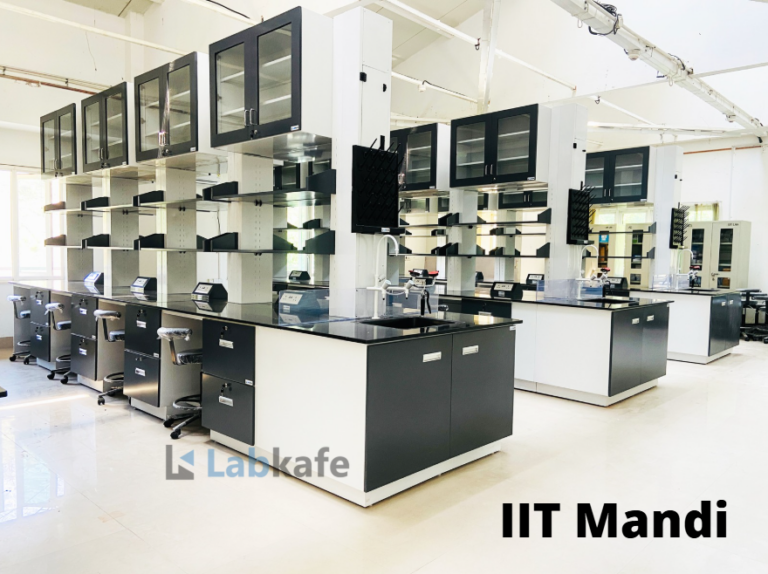

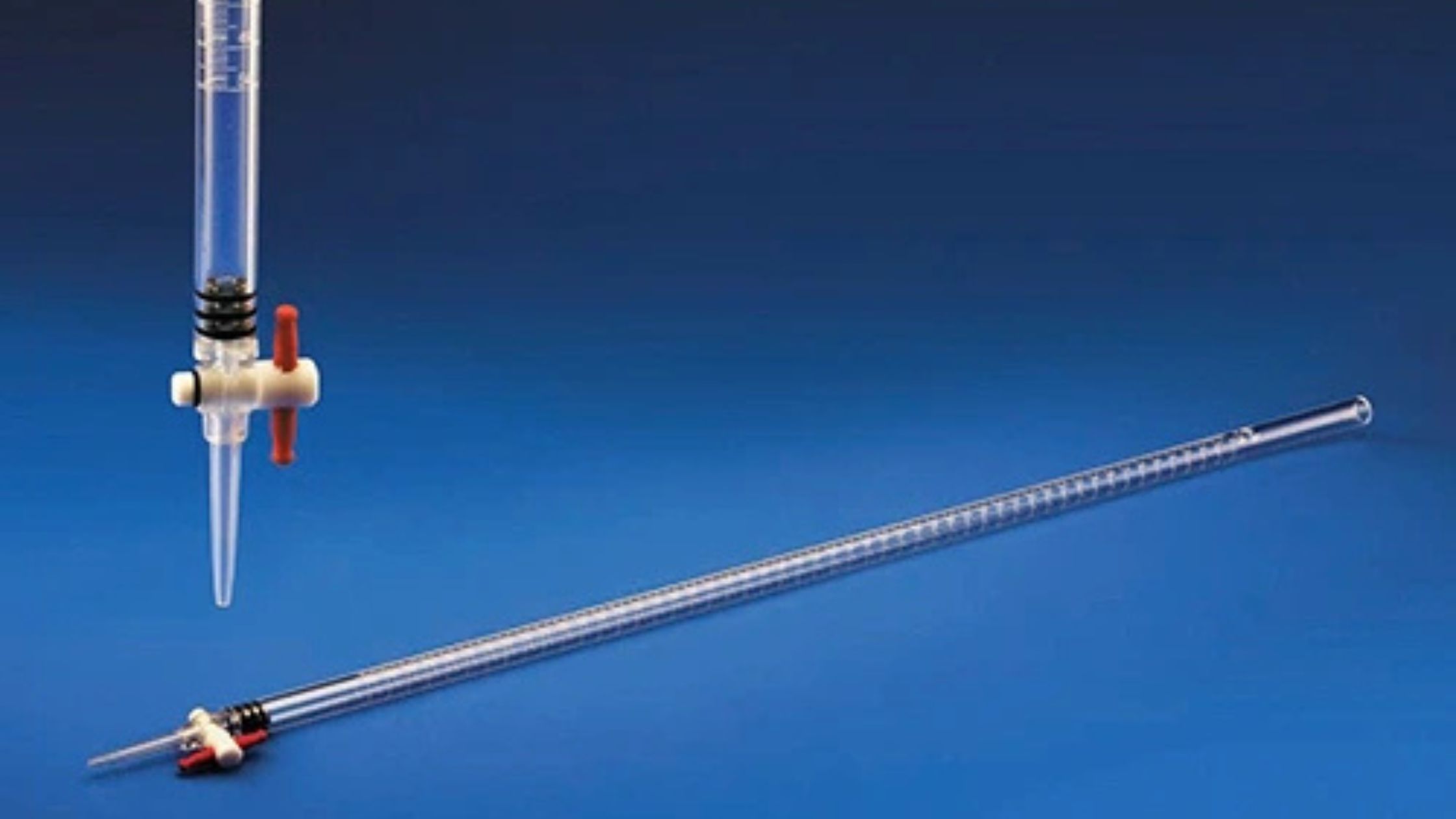
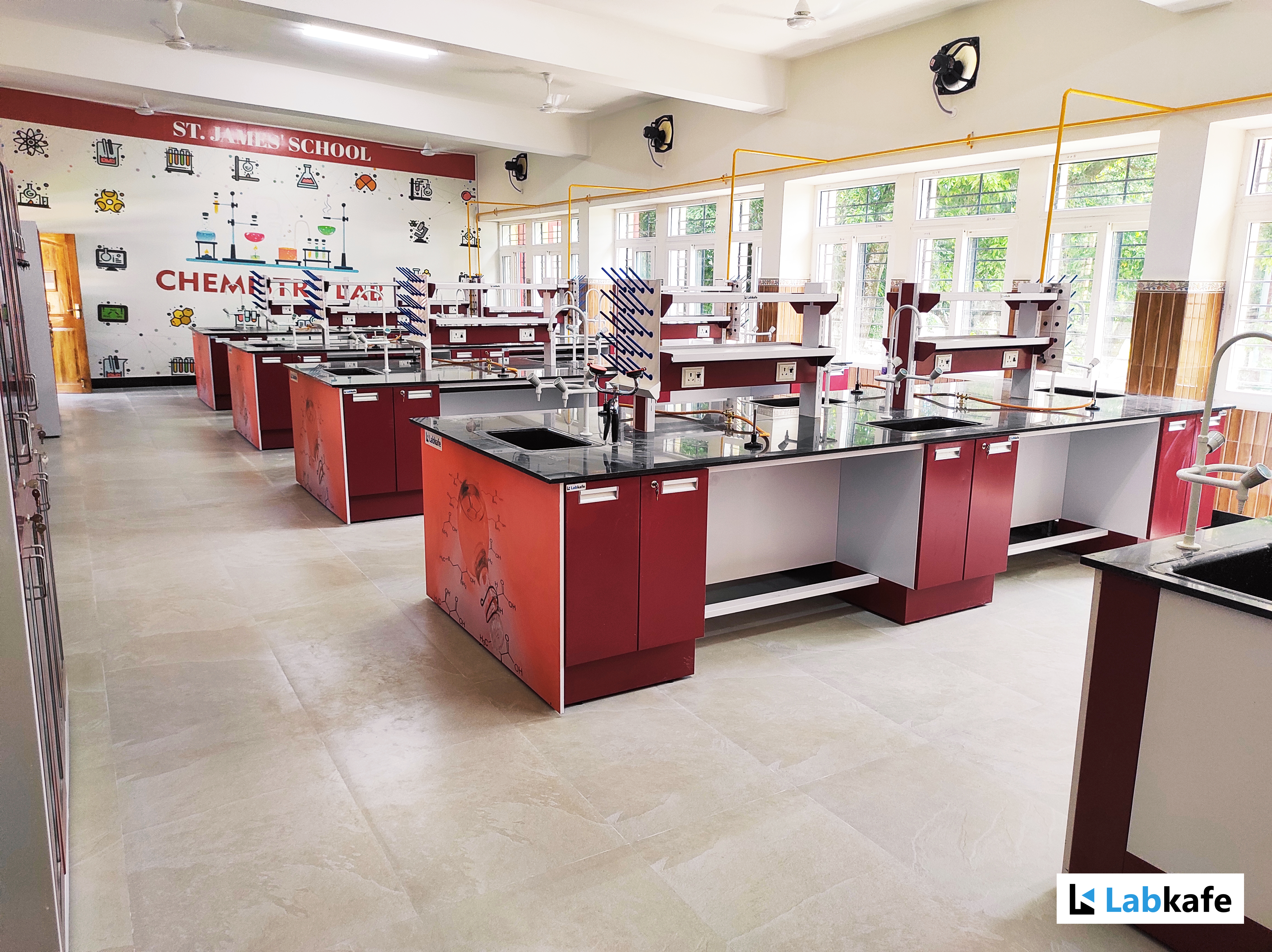

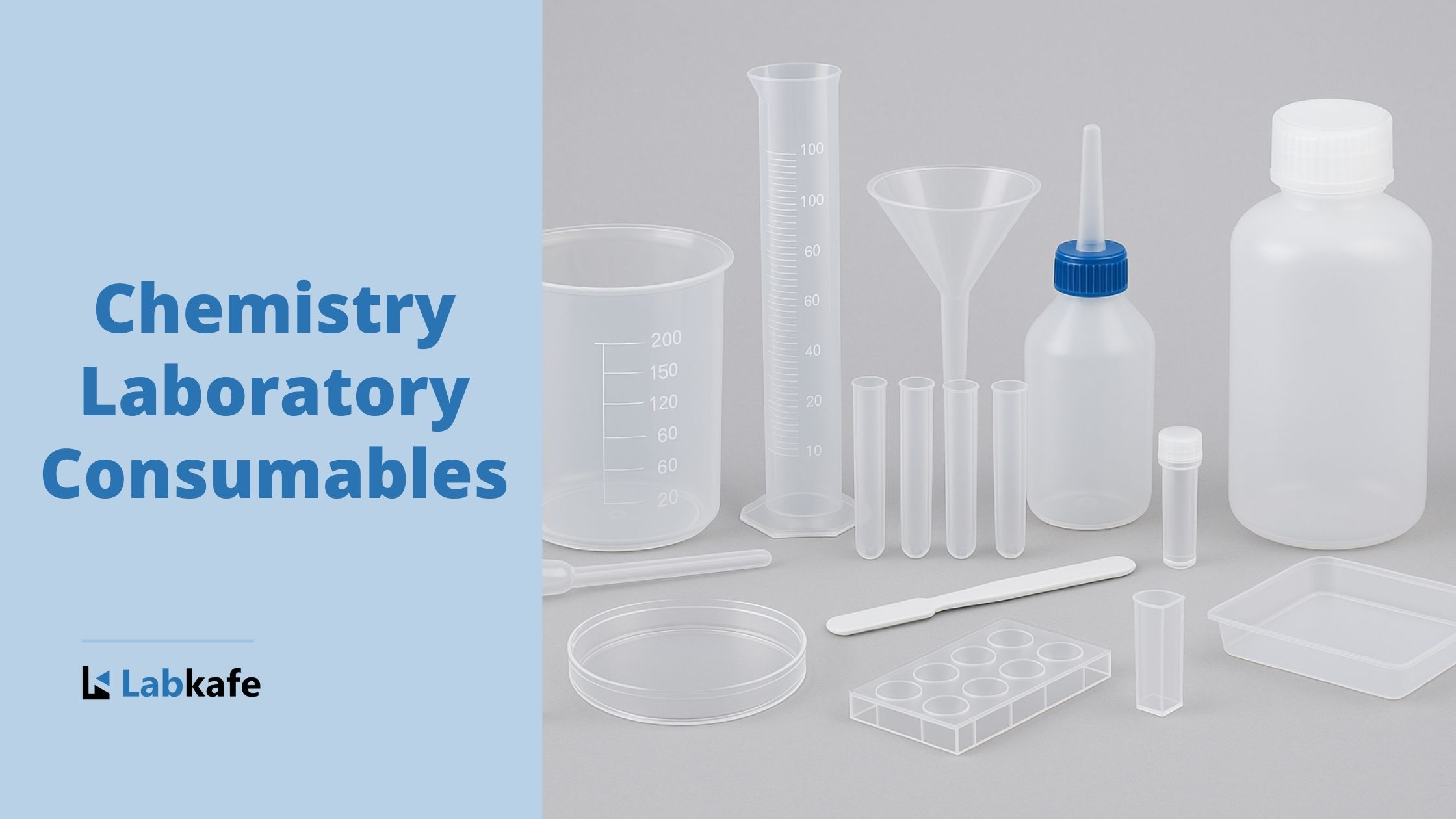
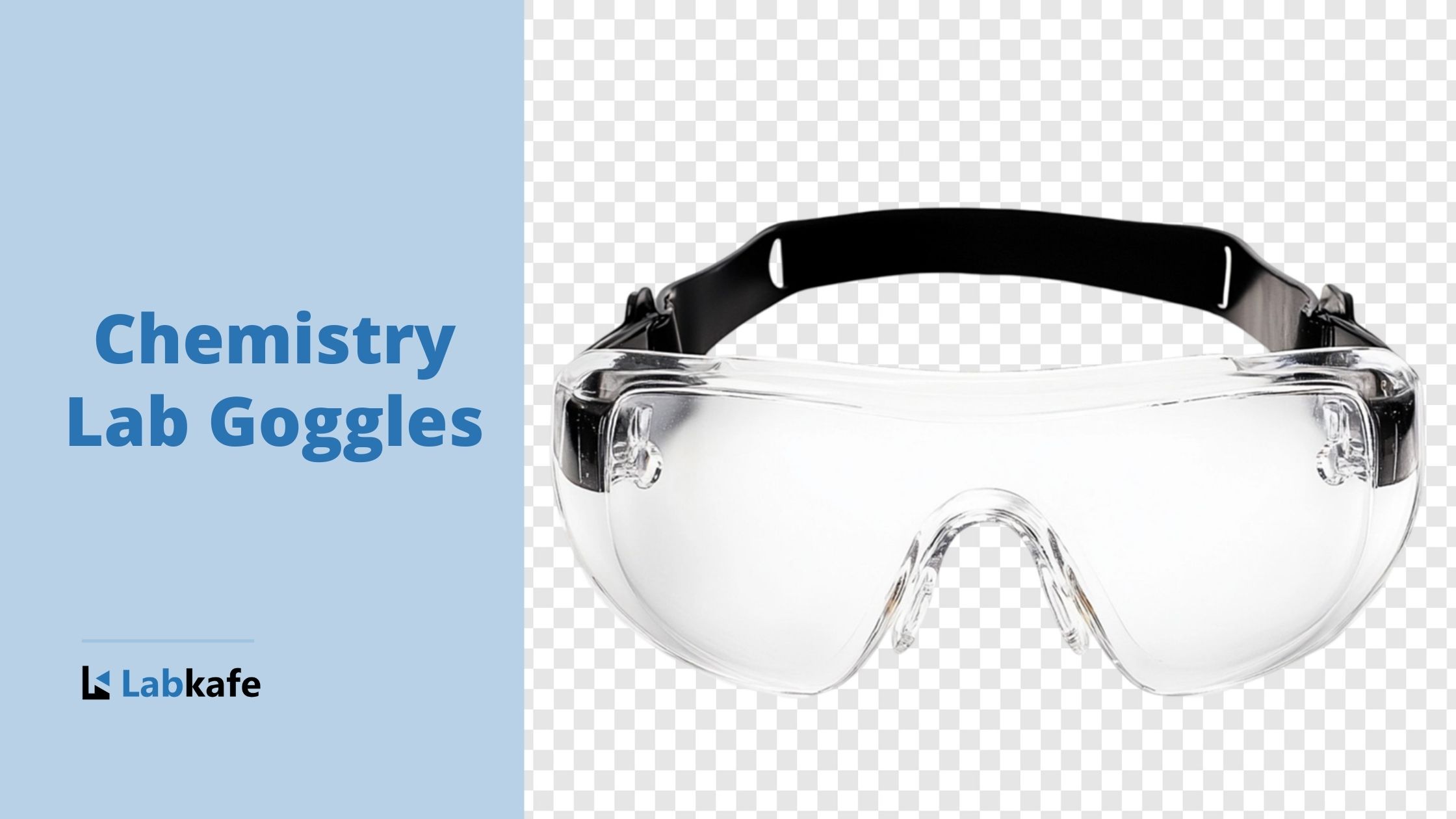
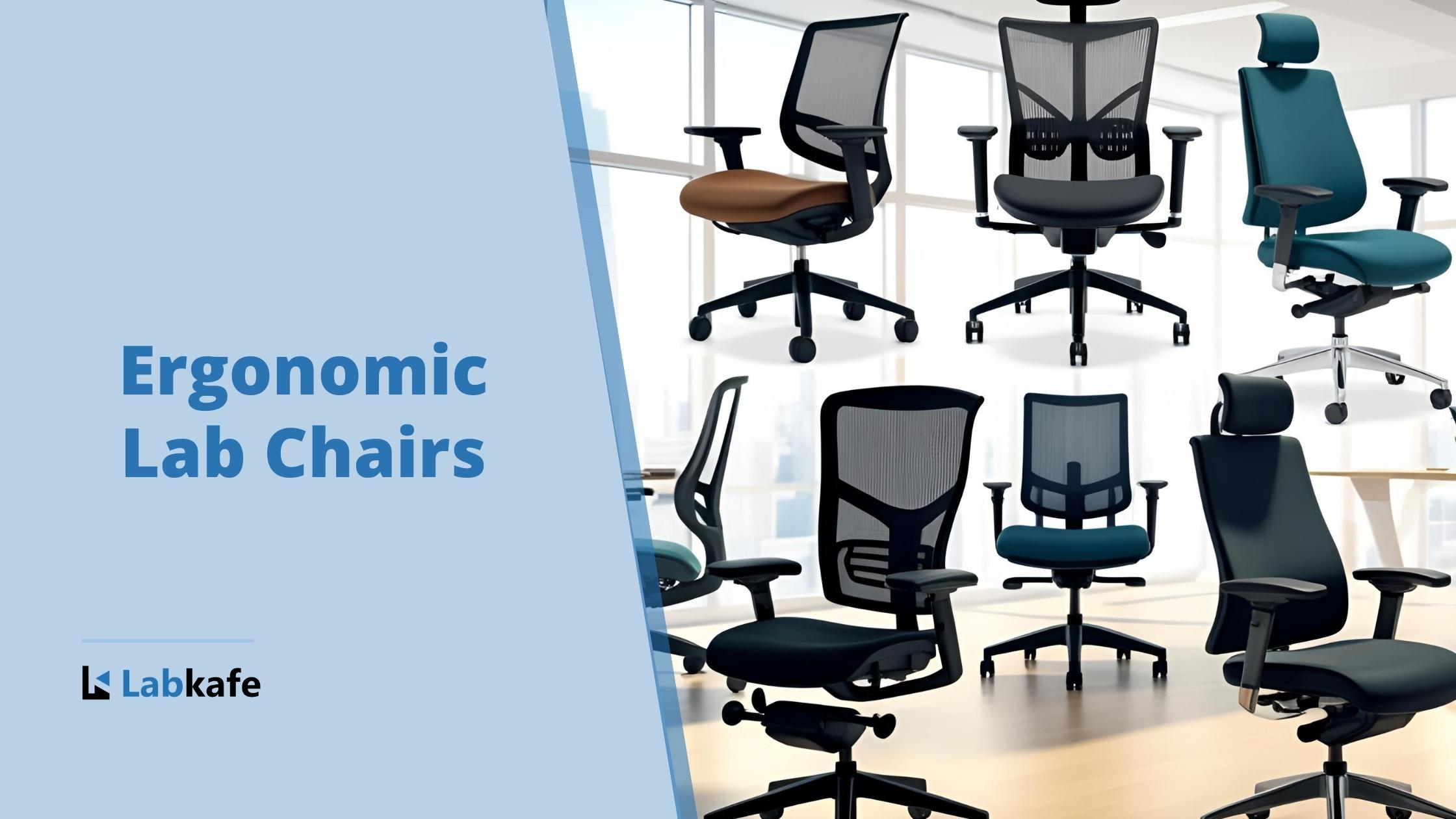




Leave a Reply